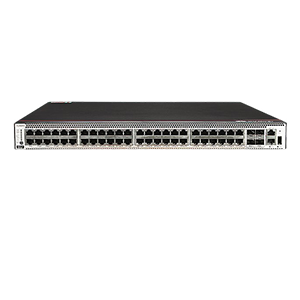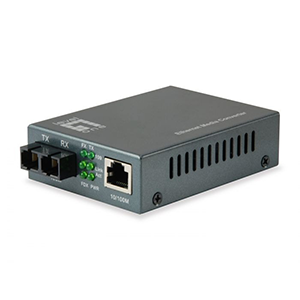Wavelength division multiplexing technology plays an important role in optical communications. This article will compare the main differences between WDM (wavelength division multiplexing) and DWDM (dense wavelength division multiplexing). We will first define the basic principles and characteristics of WDM and DWDM, and explain their applications and advantages in optical communications.
Next, we will deeply compare the differences between WDM and DWDM in terms of channel density, wavelength range, transmission capacity, application scenarios, and technical complexity. We will explain the impact of these differences on the performance and application of the two technologies. Finally, we will provide suggestions for choosing WDM or DWDM based on actual needs, and explain the precautions for both in application.
What is WDM
Let me introduce you in detail the basic principles of WDM (wavelength division multiplexing) and its application in optical communications:
Definition and basic principles of WDM:
- WDM (Wavelength Division Multiplexing) Multiplexing) is wavelength division multiplexing technology
- It is a technology that transmits multiple optical signals of different wavelengths on a single optical fiber at the same time
- WDM uses a special multiplexer to multiplex multiple optical signals on the same optical fiber for transmission
- At the receiving end, the demultiplexer separates these optical signals of different wavelengths
- This realizes the simultaneous transmission of multiple independent optical signal channels on a single optical fiber
Main features of WDM:
Greatly improve the transmission capacity of optical fiber: a single optical fiber can transmit up to 80-100 channels simultaneously
What is DWDM
- Define the basic principles and characteristics of DWDM (Dense Wavelength Division Multiplexing)
- Describe the application and advantages of DWDM in optical communication
The main difference between WDM and DWDM
- Channel density:
- The channel spacing of WDM is usually 100GHz or 200GHz, while the channel spacing of DWDM can reach 50GHz or less.
- DWDM has a higher channel density and can transmit more channels in the same optical fiber, thereby improving the utilization rate and transmission capacity of the optical fiber.
- Wavelength range:
- WDM usually works in C-band (1530-1565nm) or L-band (1565-1625nm).
- DWDM can utilize the entire optical fiber communication window, including C-band and L-band, and even extend to O-band (1260-1360nm) and S-band (1460-1530nm).
- DWDM has a wider wavelength range and can carry more channels, thereby increasing the transmission capacity of the system.
- Transmission capacity:
- The transmission capacity of WDM system is usually around 10-40Gb/s.
- DWDM systems can achieve a transmission capacity of 100Gb/s or even Tb/s.
- DWDM’s high channel density and wider wavelength range are the main reasons for its significant increase in transmission capacity.
- Application scenarios:
- WDM is more suitable for short-distance or medium-distance network applications, such as metropolitan area networks, campus networks, etc.
- DWDM is more suitable for long-distance trunk networks, such as backbone networks, intercontinental submarine cables, etc., and can make full use of the large bandwidth characteristics of optical fibers.
- Technical complexity:
- WDM’s technical implementation is relatively simple and low-cost.
- DWDM has a high technical complexity, requiring more sophisticated filters, more stable light sources, etc., and its cost is relatively high.
In general, DWDM has higher channel density, wider wavelength range and greater transmission capacity than WDM, but its technical implementation is also more complex and expensive. In practical applications, the two need to be selected based on specific network requirements and cost budgets.
Selection and application considerations of WDM and DWDM
Suggestions for choosing WDM or DWDM:
- Based on network transmission distance:
- For short-distance or medium-distance networks, such as metropolitan area networks and campus networks, it is recommended to use WDM technology, which is relatively simple and low-cost.
- For long-distance trunk networks, such as backbone networks and intercontinental submarine cables, it is recommended to use DWDM technology, which can make full use of the large bandwidth characteristics of optical fibers.
- According to the required transmission capacity:
- If the transmission capacity requirement is relatively low, such as 10-40Gb/s, WDM technology can be used.
- If higher transmission capacity is required, such as 100Gb/s or even Tb/s level, DWDM technology is recommended.
- According to cost budget:
- If cost is the main consideration, WDM technology has more advantages and lower cost.
- If relatively high costs can be accepted, DWDM technology can provide higher transmission performance.
Precautions in application:
- Wavelength stability:
- In DWDM systems, the wavelength of the light source needs to be very stable to prevent interference between channels. High-performance light sources and wavelength control technologies are required.
- Signal spacing:
- In DWDM systems, the wavelength spacing between channels is very small, and high-performance optical filters are required to ensure that channels do not interfere with each other.
- Temperature and environmental impact:
- DWDM systems are more susceptible to temperature and environmental changes, and stable temperature control and environmental monitoring measures are required.
- System complexity:
- DWDM systems are more complex and require more professional design, installation and maintenance personnel.
- Cost investment:
- DWDM systems have high equipment costs and operating costs, and the return on investment needs to be carefully evaluated.
In short, in actual applications, it is necessary to weigh the advantages and disadvantages of WDM and DWDM based on factors such as network requirements and cost budgets, and pay attention to relevant technical requirements and application precautions to select the most appropriate technical solution.
Summary
WDM and DWDM are key technologies for building high-capacity optical transmission networks. Our company has long been focusing on the research and development and application of wavelength division multiplexing technology, and has rich experience in WDM and DWDM system integration. We provide various high-performance WDM and DWDM system components, including light sources, multiplexers, optical fibers, optical amplifiers, etc., which can be widely used in long-distance optical fiber communications, metro networks, and data center interconnection.
Whether your application scenario requires WDM or DWDM, our engineering team will provide you with professional system selection and integration services to ensure that the selected technology performs best in actual applications. Contact us now to learn more. We will do our best to provide you with the best quality products and solutions.
Wavelength Division Multiplexing FAQ
Wavelength Division Multiplexing (WDM) is a technology used in fiber optic networks to combine multiple optical signals on different wavelengths into a single optical fiber, allowing for more efficient data transmission.
The two main types of WDM are Coarse Wavelength Division Multiplexing (CWDM) and Dense Wavelength Division Multiplexing (DWDM). CWDM has wider channel spacing and fewer channels, while DWDM has narrower spacing and more channels.
WDM technology works by using multiple lasers to send signals at different wavelengths through a single optical fiber. At the receiving end, a demultiplexer separates the wavelengths back into individual signals for processing.
WDM increases the capacity of fiber optic networks by allowing multiple data streams to be transmitted simultaneously over a single fiber, optimizing bandwidth usage and reducing the need for additional fibers.
CWDM uses wider channel spacing (typically 20 nm) and fewer channels, making it suitable for short to medium distances. DWDM uses narrower channel spacing (typically 0.8 nm to 1.6 nm) and more channels, supporting high-capacity, long-distance transmission.
CWDM typically has channel spacings of 20 nm, while DWDM systems usually have channel spacings of 50 GHz (0.4 nm) or 100 GHz (0.8 nm), allowing for a higher number of channels.
WDM is commonly used in telecommunications networks, data centers, metropolitan area networks (MANs), and long-haul optical networks to increase data transmission capacity and support high-speed internet services.
Key components include wavelength multiplexers and demultiplexers, optical add/drop multiplexers (OADMs), optical amplifiers (such as Erbium-Doped Fiber Amplifiers or EDFAs), and optical transceivers.
WDM technology enhances network performance by increasing bandwidth and reducing latency, allowing for higher data rates and more efficient use of existing fiber infrastructure.
Challenges include managing wavelength crosstalk, dispersion, and signal degradation, ensuring precise wavelength alignment, and handling the complexity and cost of WDM equipment and network management.



